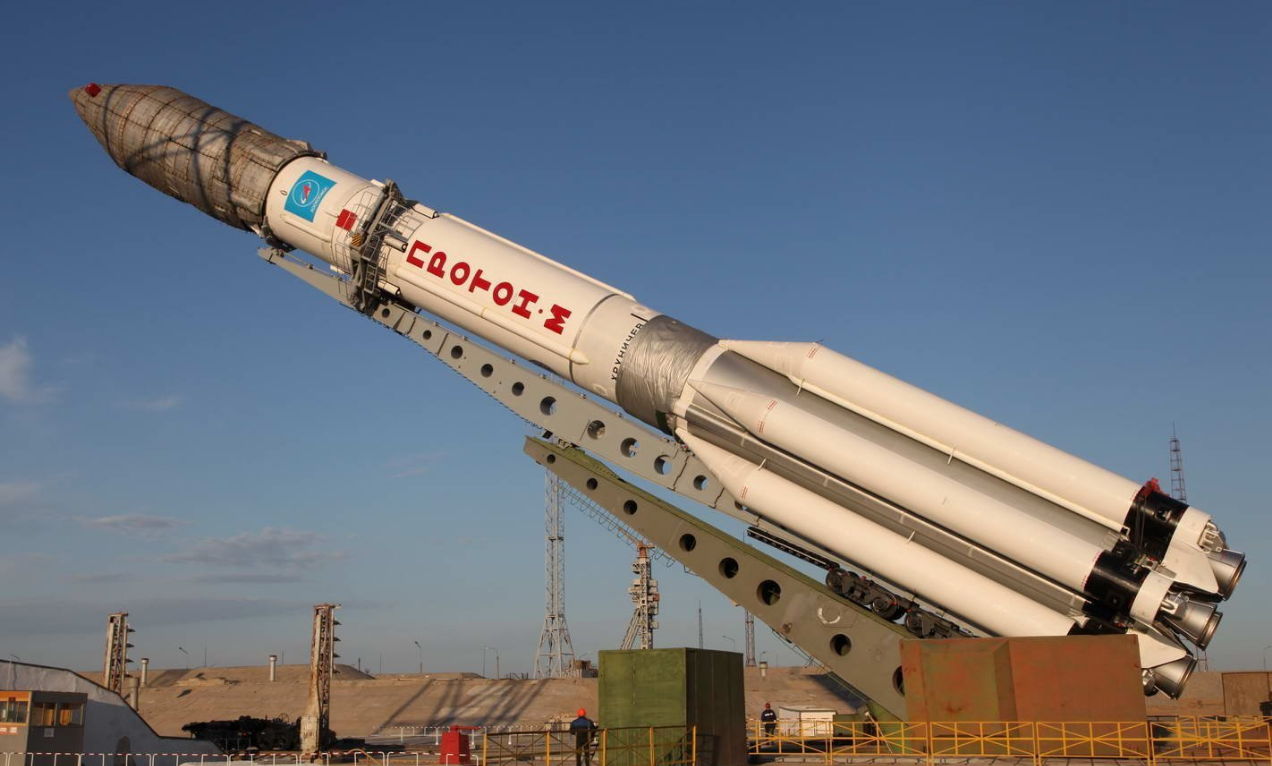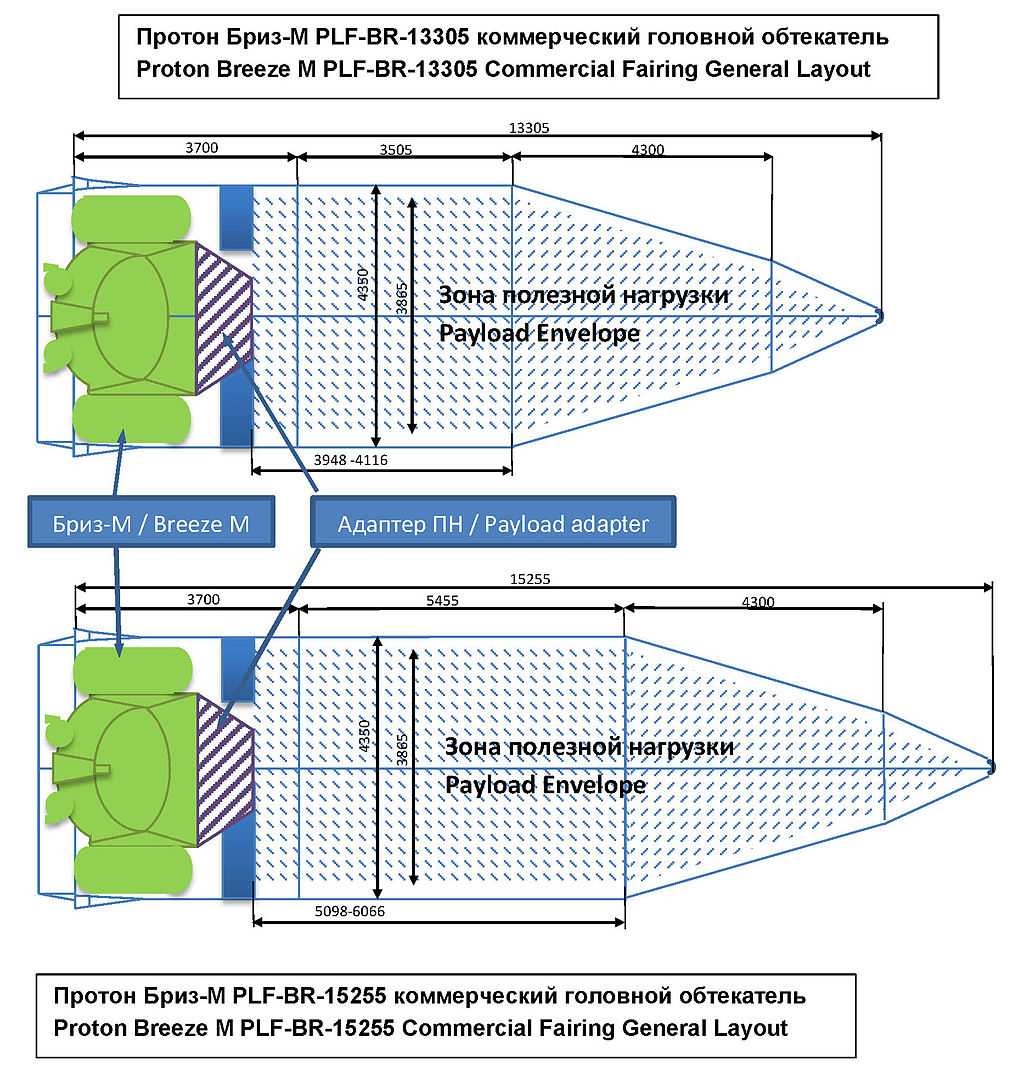GKNPTs them. Khrunicheva announced the creation of the "Middle" and "Light" versions of the "Proton-M"

Booster "Proton-M"
Today on the official website of GKNPTs them. Khrunicheva posted a press release , according to which the design bureau will make new modifications of the Proton launch vehicle. The joint Russian-American venture International Launch Services (ILS) took part in the development.
The new "Protons" will be presented in two versions - medium and light. The first launch of the average gravity of the Proton, according to the press release, is scheduled for 2018, a light one for 2019.
')
The basis of the new launch vehicles is their predecessor, the Proton-M, as well as the previously used Briz-M booster module. The average Proton will repeat the configuration of the Proton-M with the possibility of installing the same as for the older model of the head fairing with a diameter of four meters.

Two versions of fairings for Proton-M, developed in collaboration with ILS / Wikipedia
GKNPTs them. Khrunichev did not reinvent the wheel and used already tested configurations and models of equipment in the creation of the new Protons. The first stage of the middle and light “Proton” will repeat that in the “Proton-M”, the head fairing with the upper stage “Breeze-M” is also the hereditary “older” launch vehicle. The key differences between the Proton-M and the announced innovations are the rejection of the second stage to reduce the cost of launch.

Comparison of "Proton-M" and new models of PH / GKNPT site. Khrunichev
The press release cites the following data regarding the payload of the launch vehicles of the Proton line, equipped with a four-meter head fairing:
- PH of the heavy class “Proton-M”, energy characteristics: 6300 kg at ΔV = 1500 m / s;
- PH middle class "Proton Middle", the minimum energy characteristics: 5000 kg at ΔV = 1500 m / s;
- PH light class "Proton Light", the minimum energy characteristics: 3600 kg at ΔV = 1500 m / s;
"Protons" fly since 1965 and have undergone many modifications and improvements. Announcement of new lightweight models is a direct application of the domestic space industry to the fight for commercial launches, which will not only give CB finance for further development and constant live missile launches, but also ensure the survival of the country’s rocket and space industry as such.
Activation in this direction can be understood: successful commercial launches of SpaceX missiles, the announcement of Blue Origin's own launch vehicles and the development of space programs from other countries. At a certain point, the Russian space industry occupied a dominant position due to the abandonment of the program of space shuttles from the United States and a powerful base received from the USSR.

| Falcon 9 | Proton-M | "Proton Middle" | "Proton Light" | |
| Mass of PN for output to GPO (kg) | 5500/8300/4850/3400 | 6300 | 5000 | 3600 |
| Mass of PN for output to LEO (kg) | 22800/13150/9000 | 23,000 | - | - |
| Mass of PN for output to GSO (kg) | - | 3300 | 2200 | 1450 |
Comparison of the load capacity of Falcon 9 and Proton rockets
In modern realities, the creation of lighter and accessible for private companies of rockets is a necessity, since superheavy launchers are no longer in the same demand as before.
Back in 2015, the GKNPTs them. Khrunicheva reduced the cost of launching the Proton-M rocket from an average of $ 95 million to about 70 million. Launched versions of the Proton will be even cheaper.
For comparison, now the output to the GPO of a satellite weighing up to 5.5 tons with the help of Falcon 9 will cost the customer $ 62 million (that is, provided that SpaceX will try to return the first step and reduce costs). It is quite possible that it was a very significant difference of $ 8 million that caused Israelis to refuse to withdraw the Amos-6 satellite using Proton-M in favor of Falcon 9, which, unfortunately, exploded on September 1 during the pre-launch check .
In addition to the possible reduction in launch costs below $ 62 million, which the Mask company is asking for, Protons-M have been flying for about fifteen years, and out of 98 known launches, only 10 of them ended in failure. At the same time, the majority of failures are connected not with the rocket explosion at the start, but with the output of the payload (satellites) to the wrong orbit due to equipment failures.
Source: https://habr.com/ru/post/397409/
All Articles